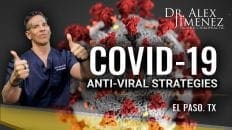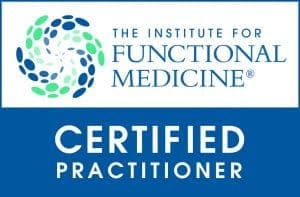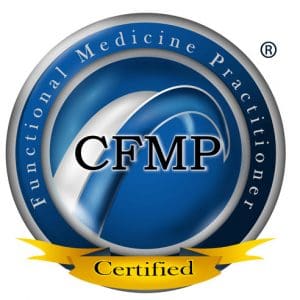It is not news that mitochondria are not the ONLY powerhouses of our body. Indeed, our gut microbiome can metabolize foods that were thought to be undigestible and therefore didn’t provide energy to our body. Furthermore, this overlapping metabolic function between mitochondria and the microbiome is yet another form of symbiosis. Our evolution from a single-cell unit to a multi-cellular living creature is the foundational phenomenon of this microbiome-mitochondrial communication. Ultimately, the microbiome’s overlapping metabolic functions and the mitochondria directly affect our cardiometabolic and immunologic functions. Nevertheless, the microbiome surpasses our genetic and cellular content, and as a host, it is our responsibility to provide an environment in which beneficial bacteria can live and grow. In turn, microbiome-derived metabolites will contribute to supply energy to mitochondria in the skeletal muscle giving metabolic stability.
Table of Contents
Nutrition: Mitochondria and the Microbiome
The connection between what we ingest, digest, and metabolize in our mitochondria has always been the classical way to understand energy production and tissue preservation. However, today we know that the microbiome can produce metabolites that promote mitochondrial function and biogenesis.Â
Mitochondrial biogenesis describes mitochondrial replication and the capacity of these new mitochondria to increase ATP production. This biogenesis mechanism coincides with the growth of specific bacterial strains and the production of gut-derived metabolites. In particular, the interaction between bacterial diversity and nutritional components such as urolithin A, short-chain fatty acids (SCFA), and lactate is responsible for mitochondriogenesis.
Nutritional compounds like SCFA and ellagitannins are promoters of gut-derived metabolites butyrate and urolithin A, respectively. Nonetheless, butyrate is associated with bacterial strains like Clostridium and Butyvibrio, whereas urolithin is produced mainly by Lactobacilli and Bifidobacterium. Recently, urolithin A has been associated with the novel bacterial strain Akkermansia muciniphila.
Furthermore, the production of butyrate and urolithin A coincides with higher microbial diversity and abundance of other gut-derived metabolites that in turn favor the growth of beneficial bacteria. Besides this beneficial effect, butyrate increases AMP kinase activation leading to mitochondriogenesis, adding another layer of symbiosis to this axis.
Butyrate confers stability and reproducibility to colonocytes in germ-free mice. Therefore, it is only natural to hypothesize that the same bacterial strains that produce butyrate can induce metabolic homeostasis.Â
Lactic acid also provides an environment promoted by lactobacilli and bifidobacteria (and possibly mitochondria). Indeed, lactic acid enhances the production of butyrate by microbiota and the production of ATP.
There is growing speculation of a connection between muscular lactic acid production and microbiome function. This theory could open the border of the gut microbiome to bacteria outside the gut in this interaction.
Consequently, the observations of the abundance of bacterial strains like Clostridiaceae and higher concentrations of lactic acid in blood after exercise can prove this metabolic-microbiome-muscle interaction.
Exercise, mobility, and mitochondrial health
Muscle represents the largest tissue mass in our body, and it also contains the highest amounts of mitochondria, which means it is the most metabolically active tissue. There is a coincidental interplay between the host’s fitness, muscle mass, and butyrate levels. This has been studied and measured, with the result being that a higher fitness level of the host associates with higher fecal butyrate levels. Also, higher levels of Clostridium spp and lactobacilli in feces exist in those patients with a good fitness level.Â
Consequently, there is a clear link between the higher oxidative capacity and mitochondrial function and more elevated butyrate and urolithin A levels.
Aging, muscle, and microbiome
There is a clear association between aging, the loss of muscle mass, and microbiome dysbiosis. Indeed, this interaction plays a determinant role in the host’s metabolic function. Therefore, new therapeutic strategies encompassing probiotic supplementation in combination with prebiotics and a comprehensive physical activity guideline can be the cornerstone of anti-aging strategies.
A tale as old as time is the never-ending quest to keep youth and defeat the disease. However, the interaction between the cell mitochondria and the gut microbiome is not only old but ancient. There is a reason why these microbes are still living with us and through us, and how they have developed a way to benefit us by multiple pathways. The answer to what we need to “hack” aging is in the gut by promoting microbiome diversity and producing suitable gut-derived metabolites. In turn, we get new and better functioning mitochondria that create an environment of metabolic homeostasis and enhances body composition. – Ana Paola RodrÃguez Arciniega
References:
Franco-Obregón, A., & Gilbert, J. A. (2017). The Microbiome-Mitochondrion Connection: Common Ancestries, Common Mechanisms, Common Goals. mSystems, 2(3), e00018-17. https://doi.org/10.1128/mSystems.00018-17
Additional Online Links & Resources (Available 24/7)
Â
Online Appointments or Consultations: https://bit.ly/Book-Online-Appointment
Â
Online Physical Injury / Accident Intake Form:Â https://bit.ly/Fill-Out-Your-Online-HistoryÂ
Â
Online Functional Medicine Assessment:Â https://bit.ly/functionmed
General Disclaimer
Professional Scope of Practice *
The information herein on "The Ancestral Link Between the Microbiome and Mitochondria" is not intended to replace a one-on-one relationship with a qualified health care professional or licensed physician and is not medical advice. We encourage you to make healthcare decisions based on your research and partnership with a qualified healthcare professional.
Blog Information & Scope Discussions
Welcome to El Paso's Premier Wellness and Injury Care Clinic & Wellness Blog, where Dr. Alex Jimenez, DC, FNP-C, a Multi-State board-certified Family Practice Nurse Practitioner (FNP-BC) and Chiropractor (DC), presents insights on how our multidisciplinary team is dedicated to holistic healing and personalized care. Our practice aligns with evidence-based treatment protocols inspired by integrative medicine principles, similar to those found on this site and our family practice-based chiromed.com site, focusing on restoring health naturally for patients of all ages.
Our areas of multidisciplinary practice include Wellness & Nutrition, Chronic Pain, Personal Injury, Auto Accident Care, Work Injuries, Back Injury, Low Back Pain, Neck Pain, Migraine Headaches, Sports Injuries, Severe Sciatica, Scoliosis, Complex Herniated Discs, Fibromyalgia, Chronic Pain, Complex Injuries, Stress Management, Functional Medicine Treatments, and in-scope care protocols.
Our information scope is multidisciplinary, focusing on musculoskeletal and physical medicine, wellness, contributing etiological viscerosomatic disturbances within clinical presentations, associated somato-visceral reflex clinical dynamics, subluxation complexes, sensitive health issues, and functional medicine articles, topics, and discussions.
We provide and present clinical collaboration with specialists from various disciplines. Each specialist is governed by their professional scope of practice and their jurisdiction of licensure. We use functional health & wellness protocols to treat and support care for musculoskeletal injuries or disorders.
Our videos, posts, topics, and insights address clinical matters and issues that are directly or indirectly related to our clinical scope of practice.
Our office has made a reasonable effort to provide supportive citations and has identified relevant research studies that support our posts. We provide copies of supporting research studies upon request to regulatory boards and the public.
We understand that we cover matters that require an additional explanation of how they may assist in a particular care plan or treatment protocol; therefore, to discuss the subject matter above further, please feel free to ask Dr. Alex Jimenez, DC, APRN, FNP-BC, or contact us at 915-850-0900.
We are here to help you and your family.
Blessings
Dr. Alex Jimenez DC, MSACP, APRN, FNP-BC*, CCST, IFMCP, CFMP, ATN
email: coach@elpasofunctionalmedicine.com
Multidisciplinary Licensing & Board Certifications:
Licensed as a Doctor of Chiropractic (DC) in Texas & New Mexico*
Texas DC License #: TX5807, Verified: TX5807
New Mexico DC License #: NM-DC2182, Verified: NM-DC2182
Multi-State Advanced Practice Registered Nurse (APRN*) in Texas & Multistate
Multistate Compact RN License by Endorsement (42 States)
Texas APRN License #: 1191402, Verified: 1191402 *
Florida APRN License #: 11043890, Verified: APRN11043890 *
* Prescriptive Authority Authorized
ANCC FNP-BC: Board Certified Nurse Practitioner*
Compact Status: Multi-State License: Authorized to Practice in 40 States*
Graduate with Honors: ICHS: MSN-FNP (Family Nurse Practitioner Program)
Degree Granted. Master's in Family Practice MSN Diploma (Cum Laude)
Dr. Alex Jimenez, DC, APRN, FNP-BC*, CFMP, IFMCP, ATN, CCST
My Digital Business Card
RN: Registered Nurse
APRNP: Advanced Practice Registered Nurse
FNP: Family Practice Specialization
DC: Doctor of Chiropractic
CFMP: Certified Functional Medicine Provider
MSN-FNP: Master of Science in Family Practice Medicine
MSACP: Master of Science in Advanced Clinical Practice
IFMCP: Institute of Functional Medicine
CCST: Certified Chiropractic Spinal Trauma
ATN: Advanced Translational Neutrogenomics




















